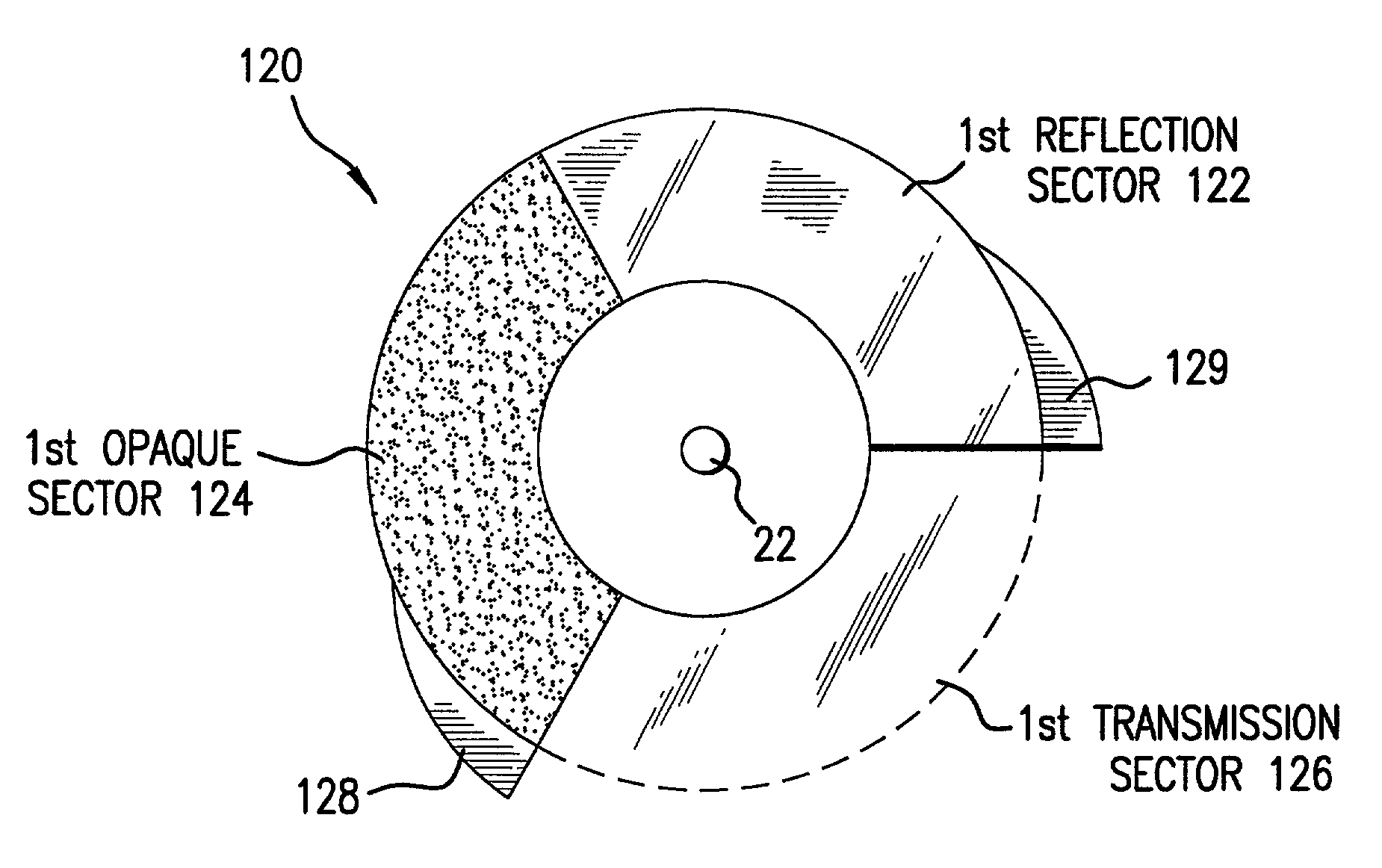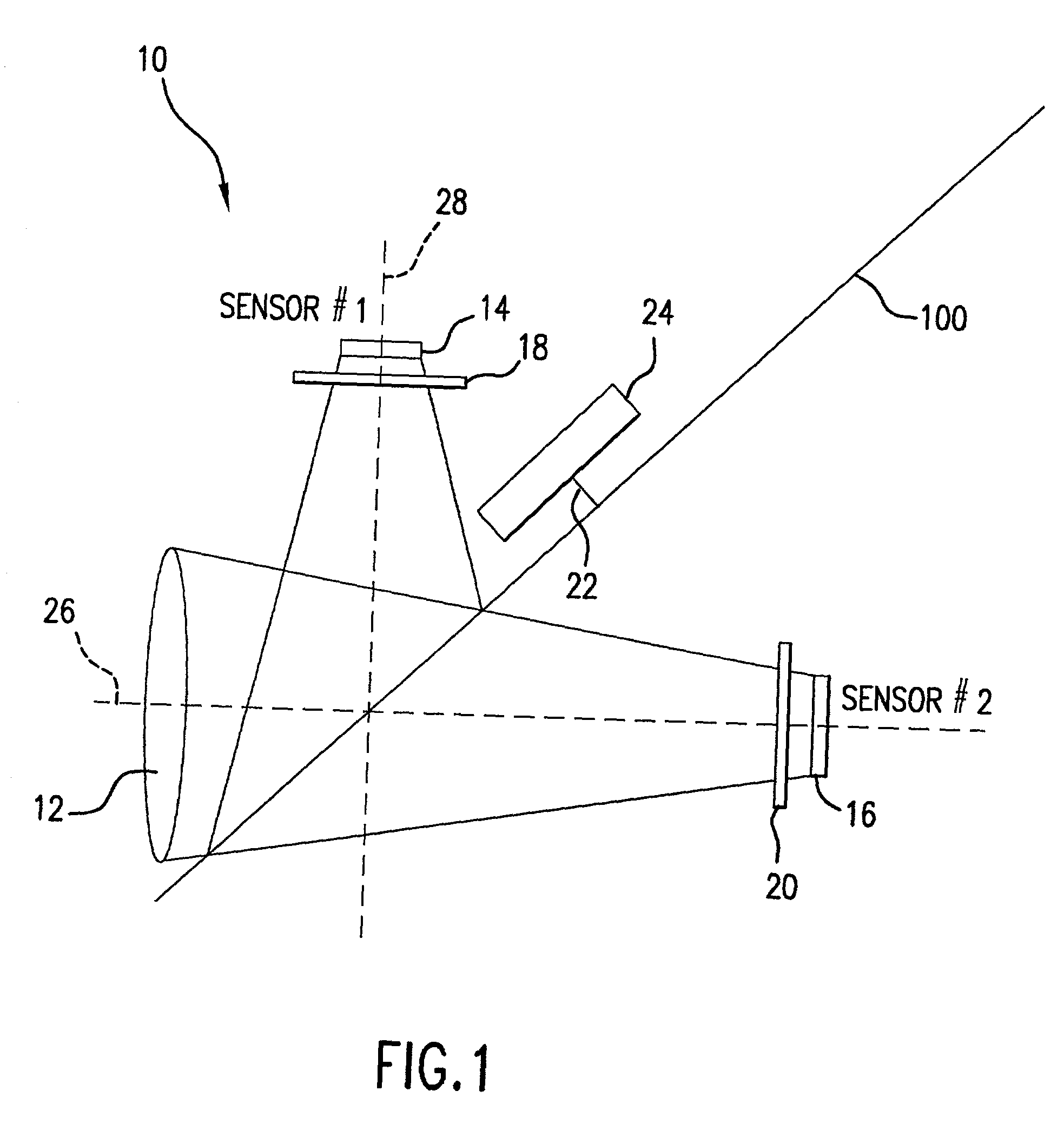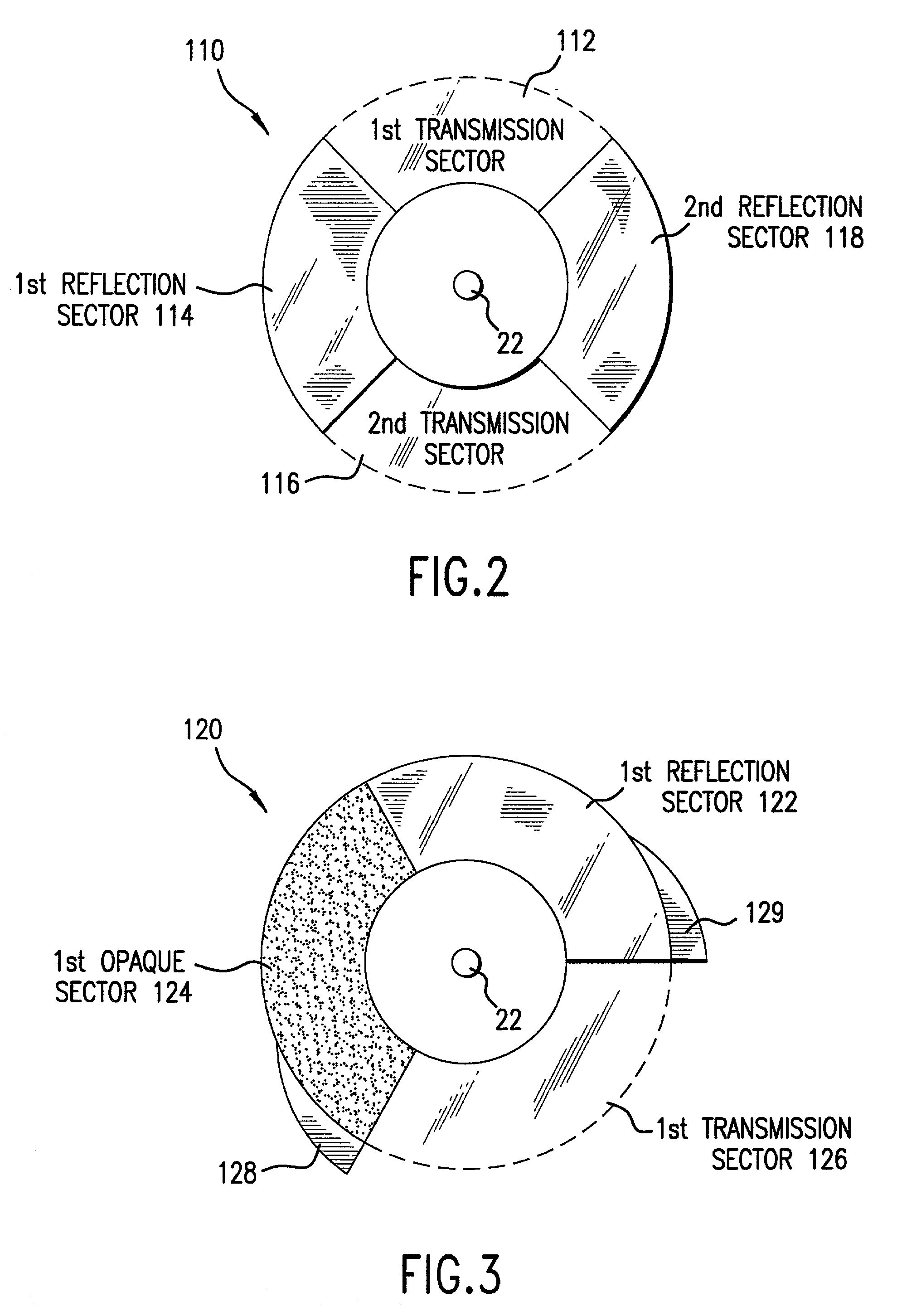Method and apparatus for a two-chip cinematography camera
- Summary
- Abstract
- Description
- Claims
- Application Information
AI Technical Summary
Benefits of technology
Problems solved by technology
Method used
Image
Examples
Embodiment Construction
[0053]In FIG. 1, camera 10 includes lens 12, first imaging sensor 14, second imaging sensor 16, and rotatable structure 100. First imaging sensor 14 is disposed to receive light that propagates along reflected axis 28 and second imaging sensor 16 is disposed to receive light that propagates along direct axis 26. Rotatable structure 100 is disposed to define a rotation plane that is oblique to both reflected axis 28 and direct axis 26. In operation, motor 24 rotates axle 22 that in turn rotates rotatable structure 100. Lens 12 focuses an image conjugate onto second imaging sensor 16 along direct axis 26 such that second imaging sensor 16 converts the image light into electrical signals. Lens 12 also focuses the image conjugate onto first imaging sensor 14 along reflected axis 28. The image light through lens 12 along direct axis 26 is reflected from a reflection sector of rotatable structure 100 to propagate along reflected axis 28. First imaging sensor 14 converts the image light in...
PUM
 Login to View More
Login to View More Abstract
Description
Claims
Application Information
 Login to View More
Login to View More - R&D
- Intellectual Property
- Life Sciences
- Materials
- Tech Scout
- Unparalleled Data Quality
- Higher Quality Content
- 60% Fewer Hallucinations
Browse by: Latest US Patents, China's latest patents, Technical Efficacy Thesaurus, Application Domain, Technology Topic, Popular Technical Reports.
© 2025 PatSnap. All rights reserved.Legal|Privacy policy|Modern Slavery Act Transparency Statement|Sitemap|About US| Contact US: help@patsnap.com



